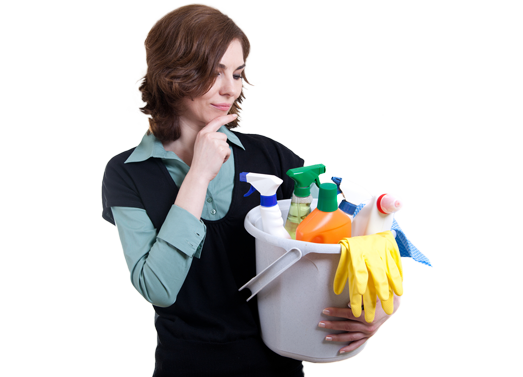Ultimate Guide to Freshening Up Damp Spaces
Posted on 28/06/2025
Ultimate Guide to Freshening Up Damp Spaces
Dampness in your home or office can be more than just an inconvenience. It can lead to musty odors, mold growth, structural damage, and even health issues. If you're tired of stuffy, clammy rooms and are seeking effective solutions, you've come to the right place. This ultimate guide covers everything you need to know to freshen up damp spaces, boost your indoor environment, and keep your space vibrant and healthy.
Understanding Damp Spaces: Causes and Consequences
Dampness occurs when excess moisture accumulates, typically in areas with poor ventilation or inadequate insulation. Knowing the root causes is the first step to refresh damp rooms and maintain a healthier living space.
Primary Causes of Dampness
- Lack of ventilation: Inadequate airflow prevents moisture from escaping, especially in basements, bathrooms, and kitchens.
- Leaky pipes or roofs: Even small leaks can add up over time, soaking ceilings, floors, or walls.
- Condensation: Warm, moist air meeting cold surfaces creates water droplets that encourage dampness.
- Poor insulation: Insufficient wall and window insulation allows cold air to invade, exacerbating condensation.
- Ground moisture: Spaces like basements are in direct contact with the soil, often allowing water vapor to penetrate through walls and floors.
Consequences of Ignoring Damp Conditions
- Mold and mildew: These fungi thrive in moist environments and can spread quickly, leading to musty-smelling rooms and potential health problems.
- Unpleasant odors: Persistent, stale, or earthy smells are signs you need to revitalize damp interiors.
- Structural damage: Prolonged exposure to moisture can weaken wood, drywall, and insulation.
- Health effects: Asthma, allergies, and respiratory issues are often aggravated by dampness and mold spores.

Practical Steps to Freshen Up Damp Spaces
Let's move beyond diagnosis and tackle essential strategies to freshen up moist environments and maintain a clean, comfortable space.
1. Improve Ventilation
- Open windows and doors: Regularly allow fresh air in, especially after showers or cooking.
- Install exhaust fans: Areas like bathrooms, laundry rooms, and kitchens benefit immensely from exhaust systems that expel humid air outside.
- Use air bricks or trickle vents: For permanent airflow, especially in older properties.
- Clear furniture away from walls: Allow air to circulate freely behind sofas, beds, and cabinets.
2. Control Moisture Sources
- Fix leaks immediately: Routinely check pipes, appliances, and your roof to prevent water accumulation.
- Dry wet clothes outdoors: Avoid adding moisture by hanging laundry inside.
- Bathe or shower with the fan on: Keep excess humidity at bay.
- Seal gaps and cracks: Make sure no rainwater or groundwater seeps indoors.
3. Use Dehumidifiers and Moisture Absorbers
- Electronic dehumidifiers: Crucial for high-humidity rooms, these devices pull moisture out of the air, making it easier to refresh dank spaces.
- Moisture trap products: Silica gel, rock salt, calcium chloride, or commercial absorbents work well in wardrobes, cupboards, and small nooks.
- Activated charcoal: Affordable and effective, charcoal absorbs both moisture and odors.
4. Regular Cleaning to Combat Musty Odors
- Clean surfaces with anti-mold sprays: Vinegar, hydrogen peroxide, and baking soda all have natural anti-microbial properties.
- Wash fabrics frequently: Cushions, drapes, and throws often trap odors and humidity; launder them more often in damp-prone areas.
- Maintain clean air vents: Dust and mold in vents spread bad smells and fungi spores throughout your house.
Natural Ways to Enhance Air Freshness in Damp Spaces
Beyond just removing moisture, you can further freshen up damp areas with natural deodorizers and air-purifying methods:
Harness The Power of Houseplants
- Peace lily: This plant absorbs moisture and neutralizes odors as it grows.
- Boston fern: Adds humidity regulation and improves air quality.
- Spider plant: Easy to maintain and excellent for absorbing pollutants that worsen musty air.
- Baking soda and essential oils: Combine a cup of baking soda with a few drops of tea tree, lavender, or eucalyptus oil--sprinkle on carpets or soft furnishings and vacuum after an hour.
- Vinegar and citrus: Place vinegar-soaked citrus peels in bowls to neutralize odors naturally.
Try DIY Moisture-Absorbing Sachets
- Rice bags: Fill small fabric pouches with uncooked rice and tuck them in drawers or corners.
- Charcoal sachets: Place these in closets, cupboards, or near shoes for odor and damp control.
Long-Term Strategies for Damp Prevention
If you're serious about refreshing and reviving humid spaces, consider these effective, longer-term solutions.
Upgrade Home Insulation
- Install vapor barriers: Vital in crawl spaces, basements, and walls that are prone to condensation.
- Double-glazed windows: These minimize the contact between warm indoor air and cold glass, stopping condensation in its tracks.
Waterproofing and Structural Improvements
- Seal brick or concrete: Use waterproof paints and sealants on vulnerable surfaces.
- Improve guttering/drainage: Make sure water moves away from your foundation, not towards it.
- Elevate storage: In basements and garages, keep boxes or items off the floor to avoid moisture absorption.
Upgrade Mechanical Ventilation Systems
- Heat Recovery Ventilators (HRVs): These extract stale, moist air and exchange it for clean air, improving the overall atmosphere.
- Smart climate controls: Modern thermostats and humidity sensors automatically adjust ventilation and heating to maintain safer humidity levels.
Professional Solutions for Severe Dampness
Sometimes, freshening up highly damp spaces requires the help of specialists, especially if you notice mold infestations, large water stains, or a persistent musty odor. Consider:
- Professional mold remediation: Certified experts use industrial-grade products and tools to safely remove mold colonies.
- Building inspections: A surveyor or contractor can identify hidden leaks, insulation failures, or structural vulnerabilities.
- Specialist waterproofing companies: For advanced solutions like exterior waterproof membranes or sump pumps.
Tips for Freshening Up Different Types of Damp Spaces
Each space in your home presents unique challenges. Here's how to tackle several common problem areas:
Basements
- Install a dehumidifier: Basements usually require heavy-duty dehumidification year-round.
- Check sump pumps and drains: Keep these in working order to prevent water seepage after heavy rains.
- Waterproof paint: Apply to walls and floors to act as a moisture barrier.
Bathrooms
- Ensure adequate ventilation: Fit a powerful extractor fan and leave the door or window open after hot showers.
- Wipe down tiles and shower screens: Remove surface moisture that can quickly become mildew or mold.
- Store towels outside the bathroom: Wet towels raise humidity and contribute to slow drying.
Kitchens
- Use extractor hoods: Always operate a hood when cooking or boiling water.
- Store food properly: Keep bread, produce, and dry goods sealed to prevent spoiling from excess moisture.
Closets and Storage Rooms
- Install mini dehumidifiers: Plug-in or silica-based units keep these small spaces fresh.
- Rotate contents: Every few months, air out clothes, books, or linens to prevent musty build-up.
- Use cedar blocks or lavender sachets: These natural solutions minimize both dampness and unwanted odors.

FAQs: Freshening Up Damp Areas
- How can I check if a room is too damp?
*Look for condensation on windows, peeling paint, dark patches on walls, and a persistent earthy or musty smell. You can also use a digital hygrometer to monitor humidity levels (ideally, between 30 and 50%).* - Will a dehumidifier remove musty odors as well as moisture?
*Yes. By reducing air moisture, it discourages mold and mildew growth, which are primary odor sources. Combine dehumidifier use with regular cleaning for best results.* - Can I freshen up a damp space without spending much money?
*Absolutely! Open windows, use homemade moisture sacks (rice, charcoal), clean with vinegar solutions, and rearrange furniture for better airflow.*
Conclusion: Enjoy Fresh, Comfortable Living Spaces
Learning how to freshen up damp spaces empowers you to maintain a healthier, more inviting home. By understanding the causes, implementing both immediate fixes and preventive measures, and using natural deodorizers, you can banish musty odors, minimize health risks, and enjoy every room in your property all year round.
Whether you're dealing with a stubborn basement, a clammy bathroom, or musty wardrobes, these strategies will help you revitalize moist rooms and keep them that way. For persistent or severe issues, consider professional intervention to restore your sanctuary. Breathe easy, live well, and let your freshened-up spaces reflect the comfort you deserve!





